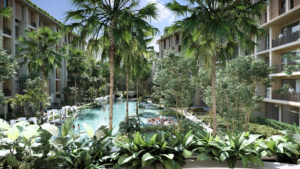
The housing market is among the most susceptible to changes in interest rates.
Eight consecutive rate hikes in 2022 to combat rising inflation sent shockwaves across the market and are still at the heart of the decline in Australian property prices.
When comparing national home prices from November 2017 to November 2018, we see a yearly decline of 3.2 percent.
However, Eliza Owen, chief of research at CoreLogic, says the decline’s speed has slowed “broadly since September.”
Although some might consider this good news, she warned that next year could see a resumption of the slide.
CoreLogic data reveals that although home prices in the country’s capital fell by 5.2%, they grew by 3.3% in the country’s regions over the same period.
In 2022, which Australian suburbs saw the most significant declines?
According to CoreLogic, the areas of Sydney’s City and Inner-South, Northern Beaches, and Eastern suburbs had the most substantial reductions in house and unit prices of all major cities in 2022.
House prices in Narrabeen, Surry Hills, and Redfern plummeted by more than 25% year-over-year, while those in Centennial Park and Mona Vale fell by 23.1% and 20.8%, respectively.
I’m interested in learning which Australian suburbs developed the most in 2022.
The city of Adelaide, on the other hand, remained steadfast throughout all of 2022. The highest annual growth rates for houses and units in Australia were recorded in the Adelaide neighborhoods of Davoren Park (34.7%) and Seacliff Park (41.4%).
Ms. Owen noted that, generally, the more inexpensive end of the market showed more substantial resistance to interest rate increases than the more expensive end.
Can we talk about local marketplaces for a second?
A combination of factors, including lower prices, more demand (relative to levels seen before the pandemic), and a smaller supply, made regional markets more resistant to market fluctuations.
Rising interest rates, however, have dampened demand in the area.
The Southern Highlands, Shoalhaven, and Sunshine Coast are just a few popular lifestyle markets that have had the most significant price drops from their peaks.
While Ms. Owen predicts that these markets will not fall below their pre-COVID-19 levels, home prices in these areas are still, on average, 38% higher than they were before the epidemic.
When looking forwards to 2023, what do you anticipate will happen with home prices?
Unfortunately, I am not a seer to tell you, but a significant factor will be the level of interest rates.
In early 2023, according to economist Maree Kilroy, rates would rise again, with the cash rate reaching a peak of 3.6 percent in March of that year.
According to Ms. Kilroy, a senior economist at BIS Oxford Economics, “Rates will begin to decrease again in 2024 and stabilize around 2.6% by mid-2025.”
The director of SQM Research, Louis Christopher, believes that the Reserve Bank of Australia shall increase interest rates again in the first few months of 2023.
“Starting with their February meeting, we anticipate more rate hikes. A majority of market participants believe the RBA will keep the cash rate at its current level of 4%, “According to Mr. Christopher.
Mr. Christopher predicts a bottom and rebound in the housing market in late 2023, provided the cash rate does not exceed 4%.
Most existing fixed loan terms gained via the epidemic will expire by the end of next year, which might further weigh down the extent of the floor in prices due to mortgage serviceability worries.
Which place did we call home for the last 12 days of the year?
The predicted yearly sales declined 13.3 percent, with around 535,000 houses sold throughout Australia in November 2022, compared to the same time of the previous year.
The cash rate was increased by 0.25 percentage points during the RBA board’s penultimate meeting of 2022, bringing it to 3.1%, while variable interest rates were increased to above 6%.
January will be a quiet month for the central bank. On Tuesday, February 7th, they will hold their following rates meeting.








